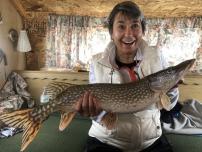
Photo © Utaem2016 | Dreamstime.com
At the outset of the year, Nancy Hobbs, the founder and executive director of the American Trail Running Association, noted the discipline was on an upward trajectory with not only increased participation but a more diverse lineup of athletes as well as events.
In the intervening months, however, federal layoffs at key public lands agencies have been creating uncertainty for trail races and threatening access to iconic events as park staffing shrinks and permit approvals face delays.
According to the site, IRunFar, some of the United States’ iconic trail races, including the Javelina 100 Mile, Badwater 135 Mile, Moab 240 Mile, Western States 100 and Hardrock 100, all take place on federally managed public lands. Additionally, notes the site, “emergent changes to how these public lands are administered may threaten the future of trail running and racing, making advocacy and volunteer efforts increasingly critical to maintaining access for the global trail running community.”

While trail running is getting its share of eyeballs, plenty of other events are held on public lands, including mountain bike racing and even winter events like cross country ski and fat bike competitions.
Layoffs across numerous federal agencies have resulted in the removal of thousands of employees from public lands agencies. Many race directors, particularly those with events on U.S. Forest Service lands, operate under multi-year permits, and might not experience acute impacts immediately. However, some race directors are already feeling the pinch from earlier hiring freezes that have left USFS offices understaffed.
“Forecasting, budgeting and planning an event experience are all dependent on a permit,” said Tim Tollefson, race director of the Mammoth Trailfest, which takes place in the mountain town of Mammoth, California, and which includes a forthcoming new 208-mile event, The Mammoth. “We are concerned about the renewal of our Trailfest permits and have had delays in a permit for our new event.”
“This is affecting not only permits, but the staging of races,” Hobbs told SDM recently. “If you think about it, with a diminished work force, projects aren't getting completed and maintenance and upkeep are a big issue. We saw the same thing in our local level years ago with cuts to the parks department (I was on the park board for many years) and with the shifting of resources.”
IRunFar noted, “Due to its extensive trail systems, the USFS hosts the majority of trail

races. However, the USFS has been the most heavily impacted by layoffs thus far, with deep cuts to seasonal trail crews, administrative staff responsible for permitting and wildfire mitigation teams. BLM lands, especially in the U.S. Mountain West and Southwest, are also critical to trail races. However, these areas now face staffing shortages that could delay permit approvals and create uncertainty for desert races. With fewer personnel to review applications, race directors may experience prolonged delays, creating significant obstacles for event planning and execution.”
Organizations like Runners for Public Lands are urging event owners to contact lawmakers with regard to the staffing cuts.
Runners for Public Lands states, “Trail races occur on U.S. Forest Service lands and other federal public lands across the United States and bring hundreds of thousands of visitors annually to these highly valued landscapes. Each trail race contributes significantly to the local community’s economy, and often brings the added benefit of extending tourism into the offseason for ski towns like Mammoth Lakes, California, outdoor recreation hubs like Flagstaff, Arizona and remote communities such as towns on the Olympic Peninsula, Washington.”

The fact that the benefits of trail racing (and associated events like clinics for runners and meetings for event owners and industry officials) extend beyond the trail is something that some organizations think is not being made clear to those in the position to make budget cuts.
But Ian Torrence (the race director of Flagstaff’s only 100-mile running event, the Flagstaff to Grand Canyon Stagecoach Line 100 Mile, 55K, Mountain Bike, and Relays and the Flagstaff Marathon) believes that in many cases, it will be a matter of doing more with less, which may involve a reset in how agencies do business.
“Federal agencies will still have the same mandates they've always had (recreation and permitting for events will still be a priority), but they might possibly have less people to maintain those functions and the need to develop new systems to achieve those roles.”
Torrence believes it is unlikely that the more established events on public lands will be cancelled for good and not return. However, he notes, event owners “may see the onus to maintain their events' safety and operational levels fall more on their own shoulders. For example, events might find themselves with more to do pre, during, and post-race, like trail maintenance, hiring professional safety staff and ordering porta-potties. Race directors can better educate themselves on the permitting process to help streamline the agency's compliance system and submit permit applications a full year or more in advance of their event's race day. Events can align their races with and donate to organizations that do volunteer work on the trails they are using. Races can educate their participants on Leave No Trace principals. And finally, race directors can build and maintain a mutual rapport with their agency's permitting liaison.”
Expect the concerns (and the changes) to continue. In the meantime, conservationists are becoming increasingly worried about budget cuts that they say could increase the risk for forest fires.

